Travel always seems so glamourous to those who don’t travel much. It all boils down to photos. Most people post only their best photos, never ones where something went horribly wrong or even just of the mundane. I see a lot of photos of digital nomads sitting in the sun, laptops on their laps, drinks in hand, smiling and laughing, but somehow working. This is not realistic at all.
The reality of working in a new place every few months, where the Airbnb host thinks a coffee table is a workstation, is a lot more like an episode of MacGyver. Building a workstation that works for you can be a challenge. Luckily, I have some tricks.
Using Existing Furniture
The first thing I do, when looking over pictures of a rental property, is identify flat surfaces, where I could sit or stand to work. Sometimes, a bureau might make a good standing desk, or an end table can be relocated to a private nook and used as a sitting desk. Thinking outside the box is required, since you can’t bring a desk with you, for sure, and you don’t want to buy new stuff all the time, that you are then gifting to the owner.
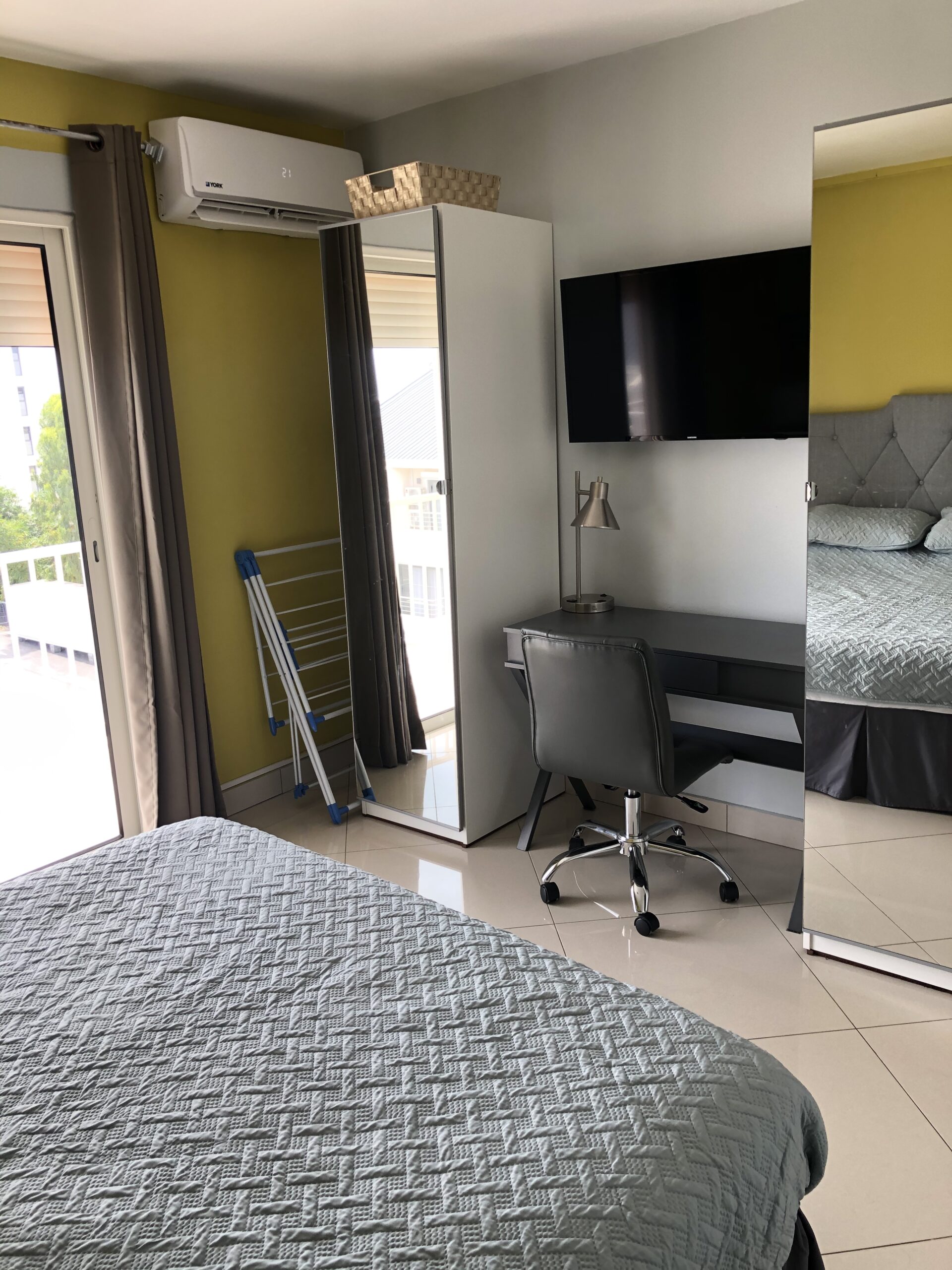
Using Boxes
Boxes are great for building on top of other furniture, when the table is too low for sitting, or you want to work standing. I always travel with masking tape. It doesn’t harm any surfaces and sticks well enough for a few months. This way you can build something quite usable. Think Legos!
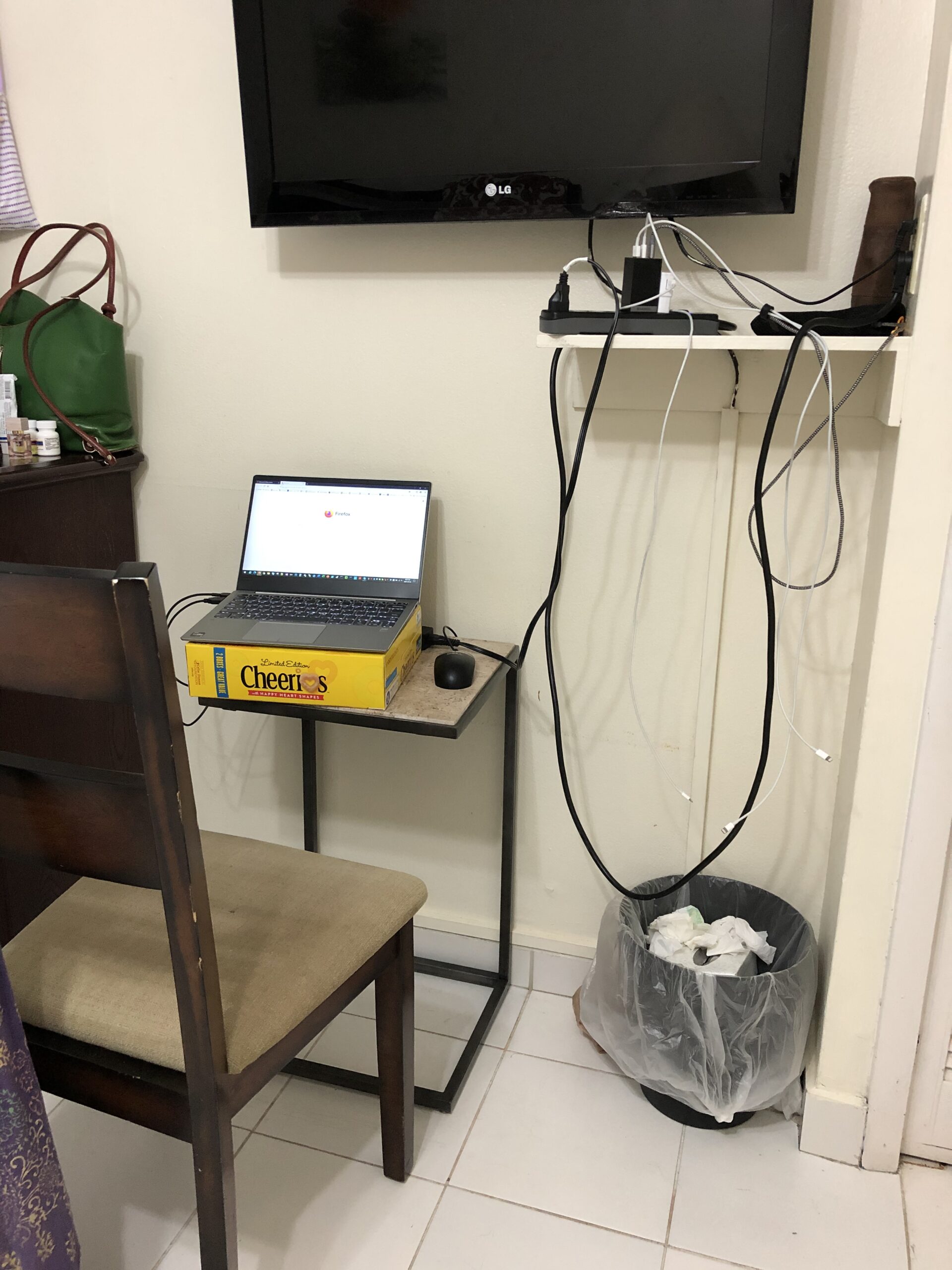
Using Ironing Boards
By far, the humble ironing board is THE BEST WORKSTATION. Why? It’s adjustable. You can sit or stand at it, as it adjusts to any height, unless you’re super tall, then you can probably only sit at it. It also has a large area for putting not only your laptop, but a notebook, snacks, tissues, lotion and, of course, my ever-present lip balm. I always remove the cover and use it bare, that way my laptop can breathe. The holes in the board make great pen holders too!
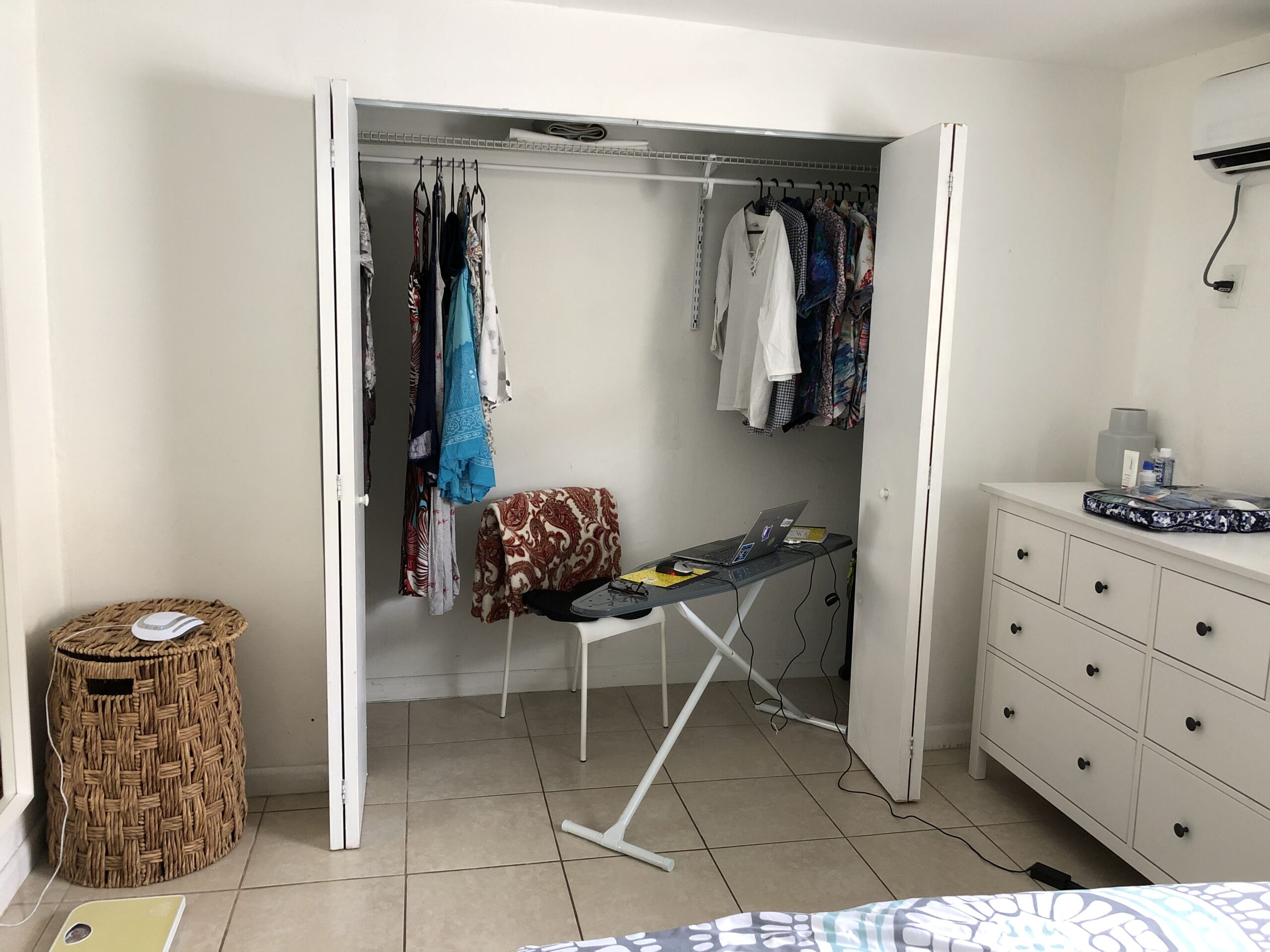
Using Cans
If there is a desk, but it’s too short for the chair, then a trip to the grocery store can solve the problem. The large sized fruit or vegetable cans are strong enough to support the legs of any desk. Just remember not to lean on it, so you don’t push the desk off the cans.
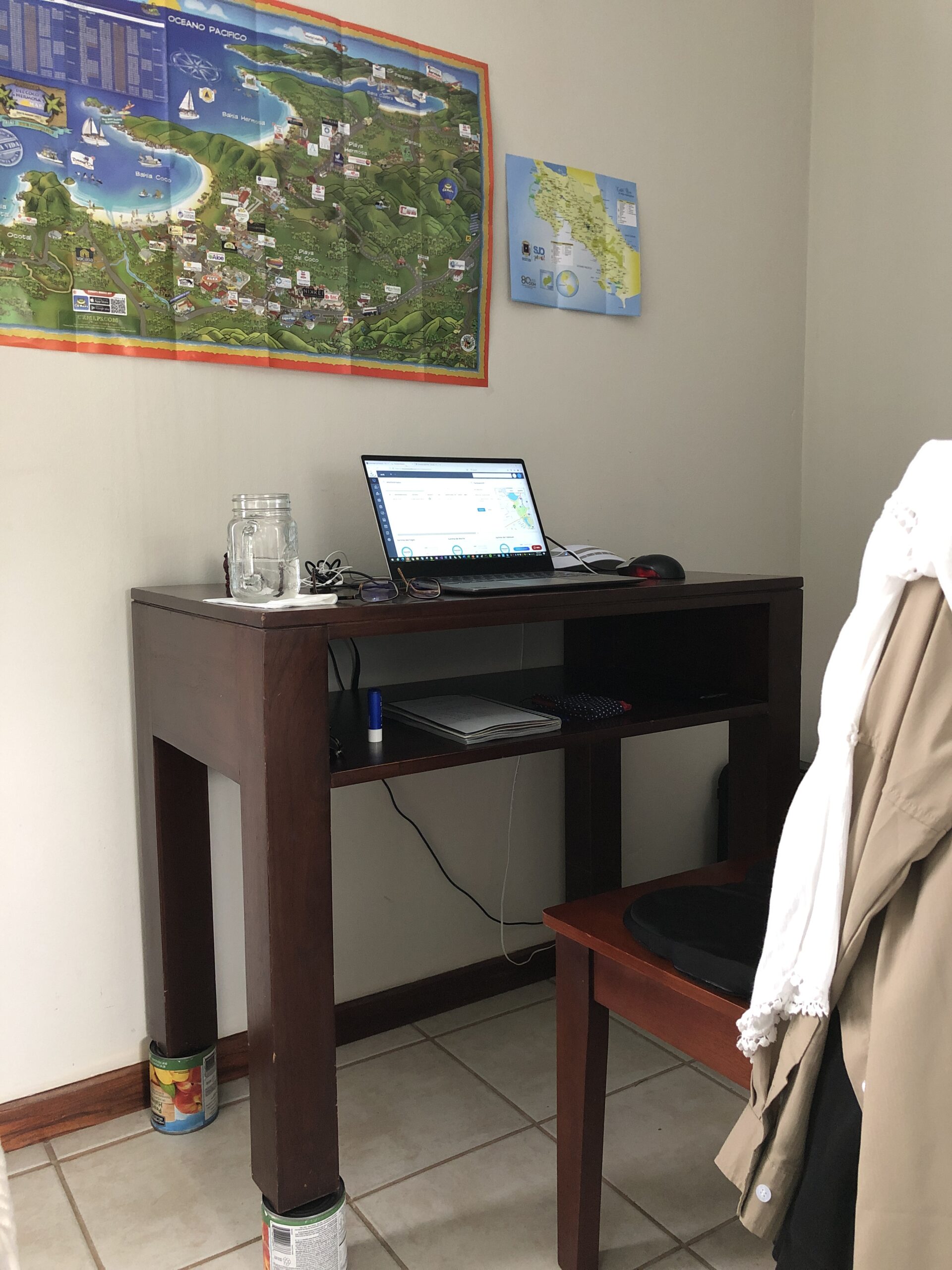
Seating
I travel with a Purple travel cushion. I couldn’t live without it. Most locations have wooden chairs, and I’m sure you realize, you can’t sit on that for 8 hours a day, but put the Purple on top and ram-a-lama-ding-dong, you’re in business. Another option to chairs is to move a table up to a bed and sit on that, which will work only if the bed is very firm and the height lines up. Memory foam is the enemy, for sitting, for sleeping, etc. My back hates you, memory foam!
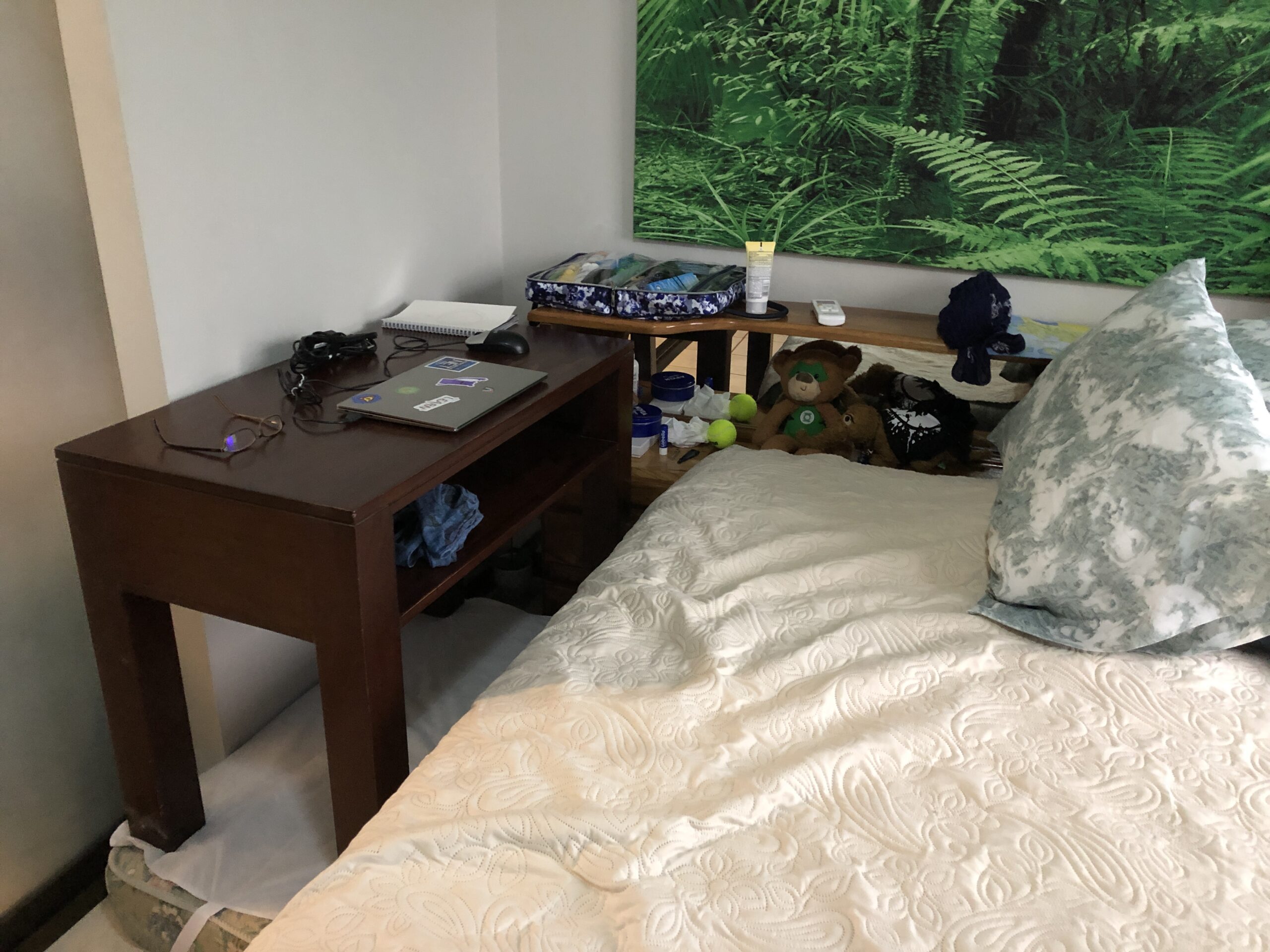
Workstation Builder Products
If you want to purchase something lightweight to take along, that can make your workstation more flexible and ergonomic, then you could consider a laptop holder to get the monitor eye height and a cordless mouse and keyboard. Something like this, which can stand on any surface.
Urmust Laptop Notebook Stand Holder
I hope these examples give you some ideas and a bit of a laugh, because without a sense of humor, travel wouldn’t be half as fun!

Hi Anita,
I’ve been traveling around Europe this summer, while working remotely part-time. I wanted to show you the following article because it’s helped me assess my availability for customers according to my itinerary:
https://www.vpnmentor.com/blog/free-wifi-hotspots-research/
I thought it might be a really helpful resource for any of your readers who’re traveling or want to relocate to a “connected” location, so that they can continue to work remotely.
Best,
Nicole